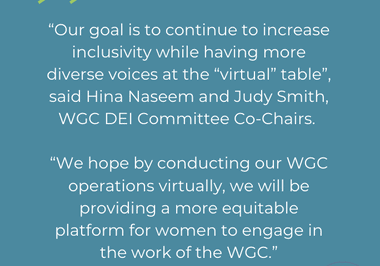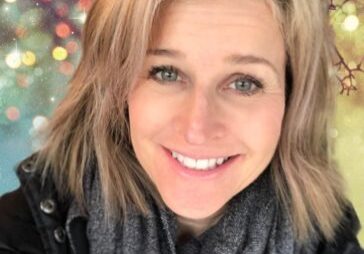PATTI SAPP TAPS INTO A SUBCONSCIOUS THAT HAS BEEN THERE ALL ALONG
STORY BY Martha Thomas PHOTOGRAPHY BY Mary C. Gardella
November/December 2016
The mother of three teenaged daughters, Anna Maria Mallin experienced her share of stress. “I had a 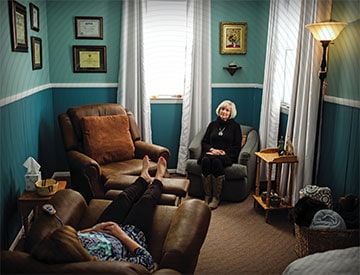
Mallin had heard about hypnosis from a friend, and “thought it was cool,” she says. The idea of reaching into her subconscious to help regain control made sense, she reasoned, “Everything I need to take care of myself is there, but it had just gotten lost in the shuffle.”
Mallin made an appointment with Patti Sapp, a former schoolteacher with a practice called Quiet Time Hypnosis in Ellicott City. After leaving the session, Mallin went grocery shopping. “Normally, maybe I’ll get a piece of candy on my way out of the store,” she recalls. “That desire was just gone.”
Kristin McCullogh, a business systems analyst and part-time massage therapist from Pasadena, had a similar experience with Sapp. McCullogh had been depressed as the result of her “failed marriage” and was seeing a therapist, she says, but felt she needed more. An endurance athlete, she says, “I’d been told on numerous occasions that going running and cycling was being selfish; if I was a better parent I wouldn’t be doing that stuff.”

Hypnosis involves entering a relaxed state – similar to meditation – wherein the mind is open to suggestion. According to Sapp, who herself underwent hypnosis when recovering from personal trauma, the idea is to “access the subconscious mind, to redirect thoughts.” It has been described as a state of “hyper-focus.” In most cases the redirection will be toward a more positive approach to everyday stresses and challenges, or, in the case of trauma, “to replace old feelings with something more current and positive,” says Sapp.
Mallin recalls being skeptical that the technique wouldn’t work. “I thought I’d fall asleep,” she says. But Sapp reassured her that, while her patients generally experience a relaxed, meditative state, they rarely slip into sleep.
Mallin also worried that she might be too distracted. “I was worried about my mind straying.” Again, Sapp reassured her. In hypnosis, says Sapp, “I’m accessing the subconscious mind; it doesn’t matter
what the conscious mind is doing.”
Sapp was an educator for nearly 30 years, teaching primary and preschool in Anne Arundel and 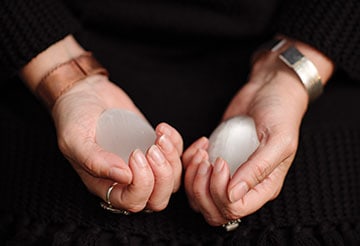
After her physical wounds healed, Sapp remained emotionally wounded; she was frightened all the time and couldn’t sleep at night. And when she did sleep, nightmares would awaken her. Sapp saw a therapist, “but didn’t experience any changes,” she says. She was ready to quit when the therapist suggested they try hypnosis. “The only thing I knew about it at that time was Las Vegas stuff,” Sapp admits. Nonetheless, she complied and closed her eyes. “My stomach was growling. I remember thinking about food,” she recalls. “I didn’t feel anything. I thought it was a joke.” But that night she slept uninterrupted. “I hadn’t slept through the night in months,” Sapp says. While the therapist was a facilitator, she realized, “it was my mind that made the changes. I realized my mind is powerful.”
Sapp’s next step was to Google and go to the library. She read everything she could find on hypnotism and hypnotherapy. She trained with experts and took classes through Harvard and at the Omega Institute in Rhinebeck, New York. She trained in specialties like smoking cessation and 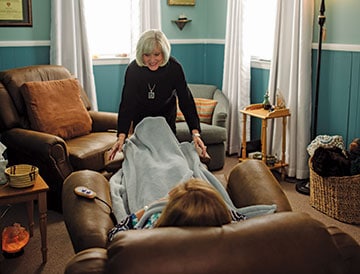
Most of her hypnotism students are therapists or addiction counselors who use hypnosis as part of an overall treatment plan. Sapp, who doesn’t call herself a therapist, describing herself instead as a facilitator, sees about 25 clients a week for a range of issues. Unlike therapy, hypnosis sessions don’t have to be regular, she says. Clients might come once a month, a couple of times a year, or when they feel the need. As a former teacher, Sapp says, she loves working with children, many with learning differences, ADHD or issues that can affect school performance.
Chase, a 7th grader, struggles with anxiety and has a hard time focusing during tests at school. When he visits “Miss Patti,” as he calls her, “I get to sit in a big comfy chair and she says to relax.” Chase says they talk during the session, often about how nervous he feels leading up to a test. “She asks me why I think I’m not going to do good at it,” he says. “She talks about how I can approach the problems and I’m more relaxed. Math tests are the worst.” Sometimes he holds smooth rocks or crystals in his hands.
Chase’s grandmother, Debby Barry, began seeing Sapp about a decade ago when her life seemed overwhelming. Indeed, if some women her age are considered the sandwich generation, Barry is a multilayered club. She lives with her daughter, who suffered a stroke several years ago, and takes care of her grandchildren. Barry’s mother is in the early stages of Alzheimer’s. Four generations live under the same roof and Barry is at the fulcrum.
Sapp, says Barry, “knows what my issues are, and she has helped me to release them.” Sapp has her imagine a playground. “I’m playing on the monkey bars, and she has me let go of one bar and grab for the next.” In the process, Barry says, “I’m letting go of a lot of issues. I was amazed at how well it worked.” *
UNDER THE INFLUENCE
When I called Patti Sapp at Quiet Time Hypnosis to set up an interview for this article, she suggested that I experience hypnosis the way one of her clients might. I expressed skepticism about the process 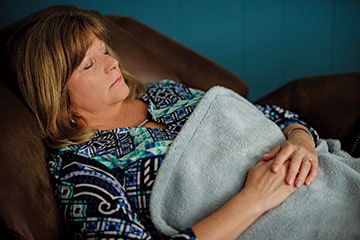
When I arrived at her office, she asked if there was anything I’d like to focus on. I chose something specific and measurable, describing my evening wine ritual. A glass while I’m cooking leads to a second with dinner and a third too easily. At 5 p.m., the craving will click on in my head, I told her. I thought it might be nice to switch that off.
Sapp asked what my favorite season is (autumn) and what kind of landscape I prefer (a stark blue ocean on a crisp day). I settled into a cushy reclining chair and closed my eyes as she led me through a relaxation routine in a modulated voice. I was walking along a shore, she told me, then down a path and into a beautiful garden. Eventually I entered a room where I found a cool, refreshing glass of water. The water nourished me and made me feel healthy and in control.
Throughout the process, which lasted a little over 30 minutes, I was aware of a throbbing ache in my shoulder. I thought about what I’d make for dinner, whether my daughter would be home in time, whether traffic would be heavy when I left Sapp’s office. After the session, I remained for a bit to interview her for this article before driving home.
As I pulled chicken and vegetables from the fridge, I reached for my carafe of filtered water instead of the open wine bottle that shares the shelf on the door. The water sparkled clear and cool as it streamed from the glass pitcher. I took a sip and it felt velvety and sweet in my mouth. I had a half glass of wine that night for dinner – and each night for the rest of the week. That bottle remained in the fridge for several days. Since then I’ve been drinking more water, throughout the day and with my meals. I find it ever so satisfying.
– M.T.


